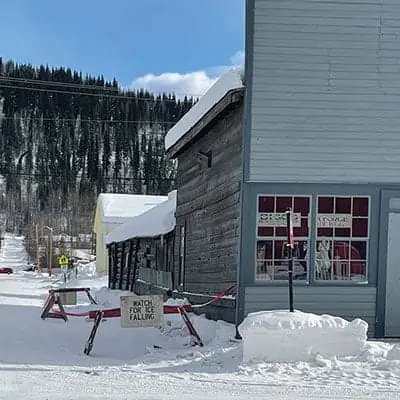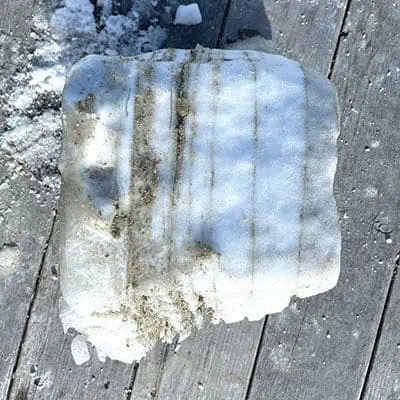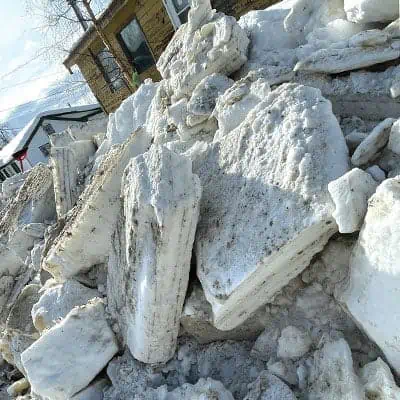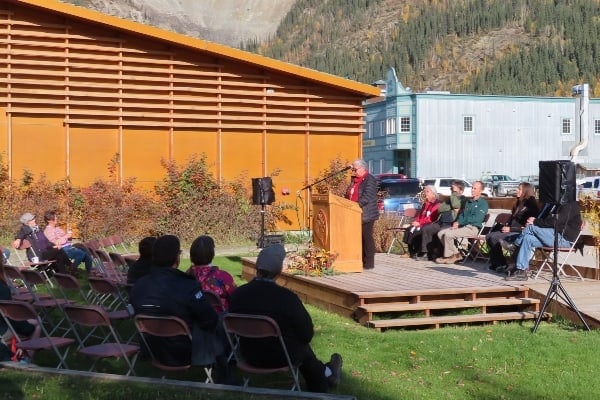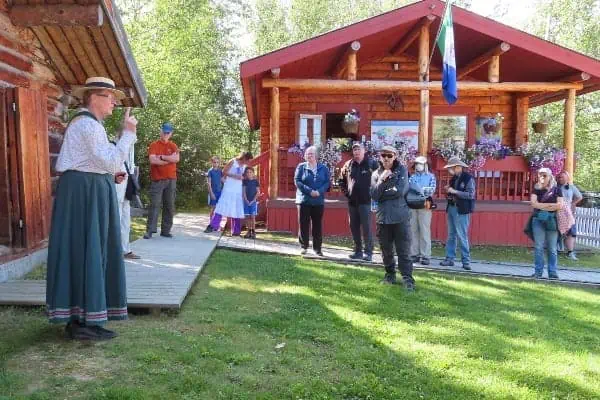A grader spent most of Easter Monday morning carving apart the glacial build-up on 7th Avenue in front of our house. By this afternoon there were large piles of crusty compressed snow slabs on the west side of the street, waiting to be hauled away later in the week.
This whole snow clearance routine started about two weeks ago now and if it wasn’t for the steady morning snowfalls that greeted us all through Easter weekend, the downtown streets would be pretty clear now.
Aside from Front Street, which is really part of the territorially maintained Klondike Highway, Dawson’s streets are packed dirt and gravel. This is not due to some nostalgic adherence to Gold Rush times. Rather, we have to dig them up so often to repair water and sewer pipes that having to break asphalt or chip-seal every time would be even worse than cracking our frozen soil.
In some ways, our streets are better in the winter. All the potholes are filled in by packed snow, while regular sanding and plowing keeps them safe to use. Of course the snow compacts to a kind of glacial ice during the winter and street levels rise half a foot or more (say, half a pick-up truck tire) until they are even with the elevated boardwalks.
Spring drops the levels in reverse and makes it harder to get from the street to the boardwalks. Dawson is not a friendly town for people with mobility issues.
If it would all just sublimate (turn to vapour) in the spring under the urging of the breeze and the increasingly intense sunlight hours, that would be fine, but most of it melts, and if it was left in place to do that, the gumbo on our streets would be even worse than it gets to be anyway. So we run graders over it with blades that dig deep and break it up. Then we plow it into piles, and truck it all to several places around town where it can melt without dissolving the streets.
On the wider streets, up to 5th Avenue, the process involves creating a berm about the height of a small car down the middle of the avenue, with enough space for a vehicle to drive on either side, and cut-outs at the intersections to allow passage across town.
On the narrower streets, they pile it up along both sides and deal with it later. Our storm drains do absorb some of the run-off, but there’s enough water coming from people’s yards and off the hill to the east of town without overloading the drains with street ice.
Some of the ice chunks from the plowing are large enough to allow for a kind of geologic record of the major snowfalls; each one punctuated by a line of dirt where the road was sanded after a major dump. The thickest one I’ve seen this year shows at least nine major snowfalls. The cleanest and thickest line is the most recent, while the lower ones are dirtier, more compressed, and therefore harder to count.
Until Easter weekend, the broken chunks stood out quite starkly against the sides of the streets, but four consecutive mornings of what my wife has been referring to as “dandruff snow” has softened the edges all over town.
As below, so above. Boardwalks along several buildings are condoned off with caution tape, advising people to avoid them in case some massive chunk of snow comes crashing down. As someone who lost the railings and part of the small deck just off our second floor bedroom one year around this time when our slide guard failed, I know how heavy that compacted snow can be.
This larger ice block allows you to count the number of major snow falls, marked by the number of times the roads were sanded.

